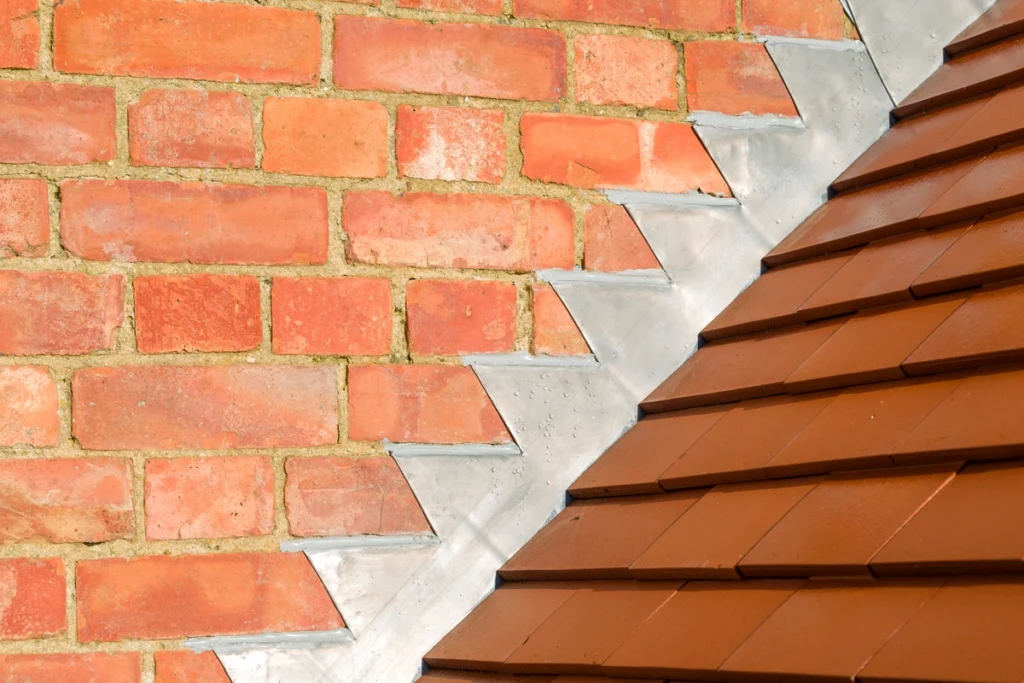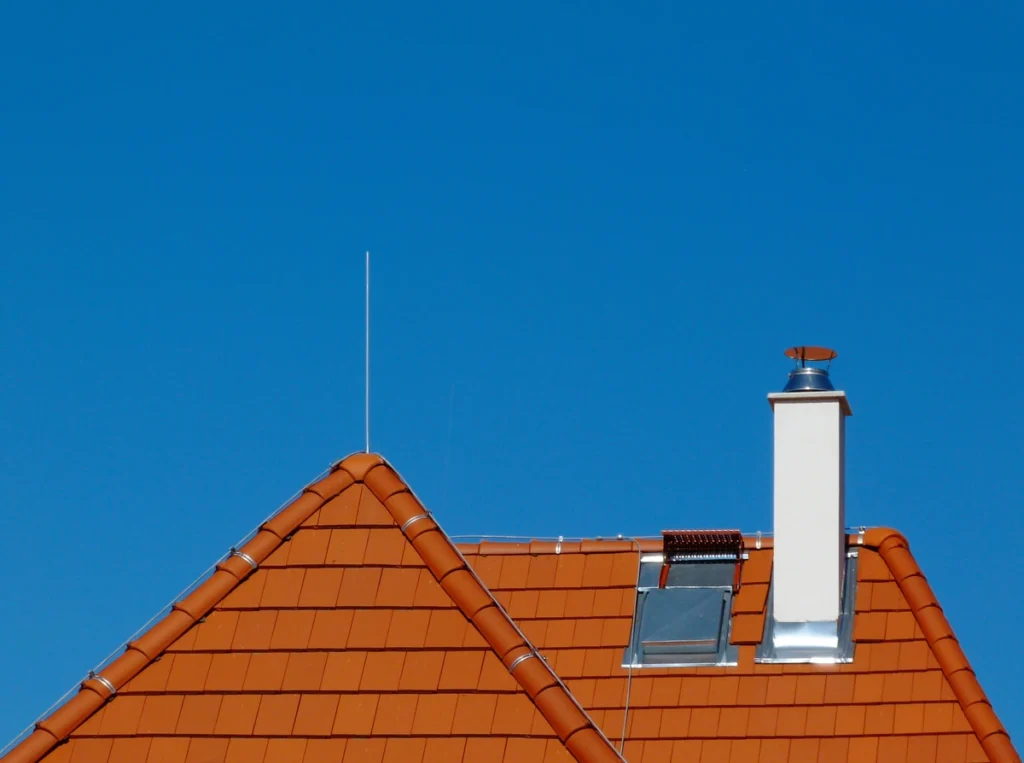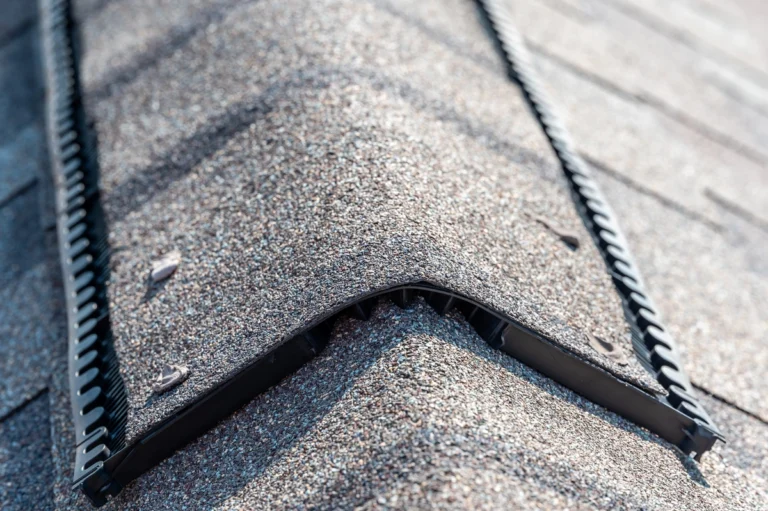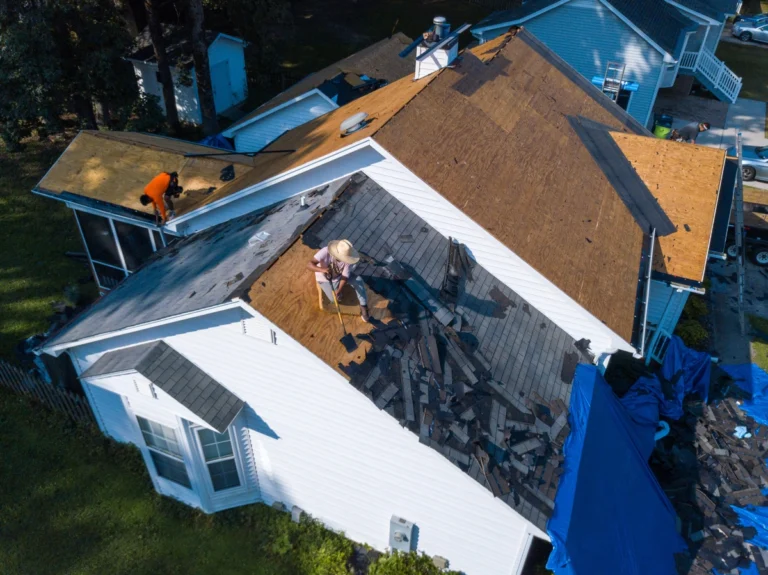Have you ever experienced the destructive consequences of water damage caused by roof leaks? From ceiling damage to mold growth, a leaking roof can have a devastating impact on your home and day-to-day quality of life.
Luckily, there is an effective solution to this problem: roof flashing. It is a crucial part of your roofing system that plays a significant role in preventing water from entering your property. In this article, we will take a closer look at the question of “what is roof flashing?” the different types of roof flashing, and their overall importance for your property.
What Is Roof Flashing?

Roof flashing is a metal or thin material filling various roof parts to prevent water from penetrating the building. These materials are installed around roof features such as chimneys, vents, and skylights. Some roof flashing material options include galvanized steel, aluminum, PVC, or lead.
Roof flashing is also used near expansion joints on a vertical wall or along the eaves. The primary purpose of this component is to direct water away from the roof surface and into the gutters or other drainage systems.
Types of Roof Flashing
Below are the different types of roof flashing and their standard installation techniques.
Roof Valleys Flashing
As the name suggests, this flashing protects roof valleys. The valleys are the middle sections where two or more surfaces meet. For example, it could be a section where the garage roof meets the house’s top.
Valley flashing features an uppercase ‘W’ shape to fit snugly in the valley. The flashing should be installed before the shingles and underlayment, which helps to prevent water from seeping in.
Apron Flashing
This type of flashing is typically used near chimneys or where a roof deck meets an adjoining wall. Indeed, it is perfect for the space between the roof and a vertical wall.
Apron flashing is also known as base flashing, as it is installed along the bottom of a sloped roof where it meets a vertical wall. The component is shaped like an L, and when properly installed, it helps to redirect water away from the roof surface.
Step Flashing
Step flashing is shaped like a staircase and is used on a section where one side is vertical and the other horizontal. For instance, it bridges the gap between a roof and a wall.
The flashing is installed by overlapping each section, which creates an interlocking pattern. You should start by installing the shingles and then the step flashing.
Counter Flashing
Counter flashing features a constant sheet of metal. In most cases, counter flashing is confused with step flashing or apron flashing. However, counter flashing does not involve joints and is primarily used as an extra protection layer on sections prone to water damage.
Drip-edge Flashing
Drip-edge flashing is used near the edge of a roof deck. A drip edge features an inverted “L” shape that carries water away from the targeted areas of your roof. It also helps keep water from seeping through the shingles and underlayment along the eave’s edge.
Skylight Flashing
These flashings are designed to offer weatherproofing joints between the roof windows or skylights and your roof’s material. Skylight flashings are shaped like a bowl and should be used for new roof installations.
Kickout Flashing
Also known as diverter flashing, kickout flashing directs water away from the roof deck and into the gutter. The flashing should also be used near any roof-to-wall juncture.
Importance of Roof Flashing

So, you have the answers to the question “what is roof flashing?” and looked at several different types. Now, let’s consider the benefits of installing roof flashing.
Prevent Roof Damage
The primary purpose of a piece of flashing is to prevent severe damage to the roof due to water infiltration. The water can cause corrosion of the roofing components, leaks, and other moisture issues. As such, adequately installed flashing can prevent corrosion, rot, and other costly roof damage.
Prevent Rot
When water seeps into the roofing structures and penetrates underneath the shingles, it can cause wood rot. Your roof is especially susceptible to rot if you live in a moist climate or an area with heavy rainfall.
Prevent Roof Leaks
The roof is supposed to protect your valuables from elements such as rainwater and snow. But sometimes, despite having a good roof, spaces between expansion joints may create room for water penetration.
Flashing helps prevent any water from seeping in through the joints, protecting your property against leaks and other issues that could arise from water infiltration.
Follow Building Code Requirements
Most states have building codes that demand flashing installation during a new construction or re-roofing project. Flashing is also mandatory for vulnerable roof sections, such as walls and skylights.
Failing to install flashing in these areas may lead to fines and other penalties from local building inspectors.
Save on Roof Maintenance Costs
Roofing repairs and replacements can be costly. But you can minimize the need for regular maintenance when you install flashing correctly. Use proper materials and hiring a roofing professional for the job is necessary.
Working with roofing experts ensures your roof will remain in good condition for longer, and you won’t have to worry about replacing it as often.
Boost Roof Longevity

Some modern roofs can serve you for up to 50 years, depending on the material. However, the longevity of your new roof depends on how well you install and maintain it.
Using suitable flashing materials and ensuring that they are correctly installed helps enhance your roof’s longevity. For instance, metal flashing is corrosion-resistant and is a barrier against moisture and its effects on your roof.
You can install flashing on a new roof or give your old roof a makeover by replacing the existing flashing. This is known as counter-flashing and involves two layers of flashing: one on the roof deck and another along a vertical surface or chimney.
Conclusion
So, what is roof flashing? As we’ve seen, it’s one of the best defenses your property has against water damage and roof leaks. By understanding what it is, you can make more informed decisions for your new home or re-roofing project, and help ensure your property gets the protection you deserve.
You can trust us at Sundance Kitchen, Baths, & Exteriors to help with roof flashing design needs. We offer design-build and construction management services, and our team of experts is happy to provide you with the necessary guidance to ensure your building is designed and built to the highest standards. Contact us today for more information about our services.





